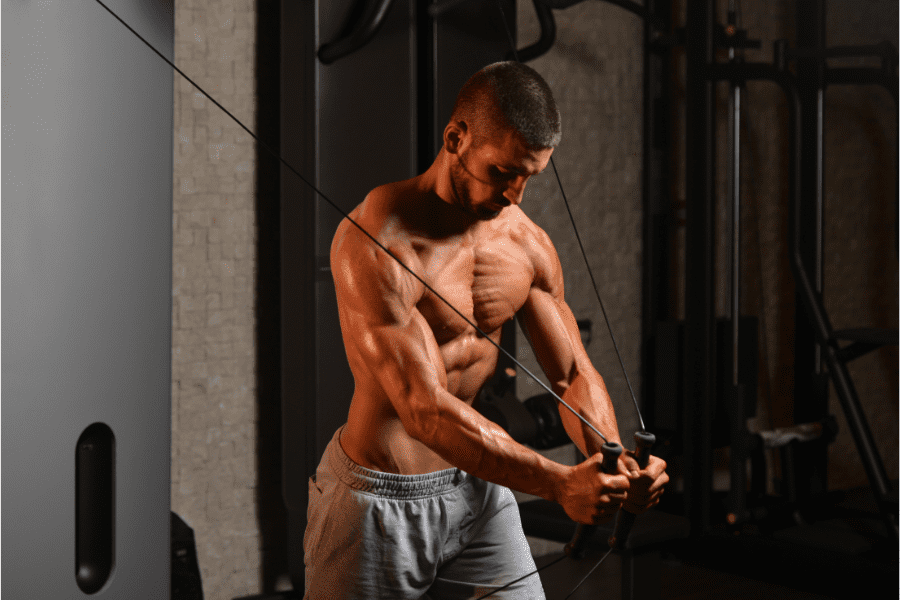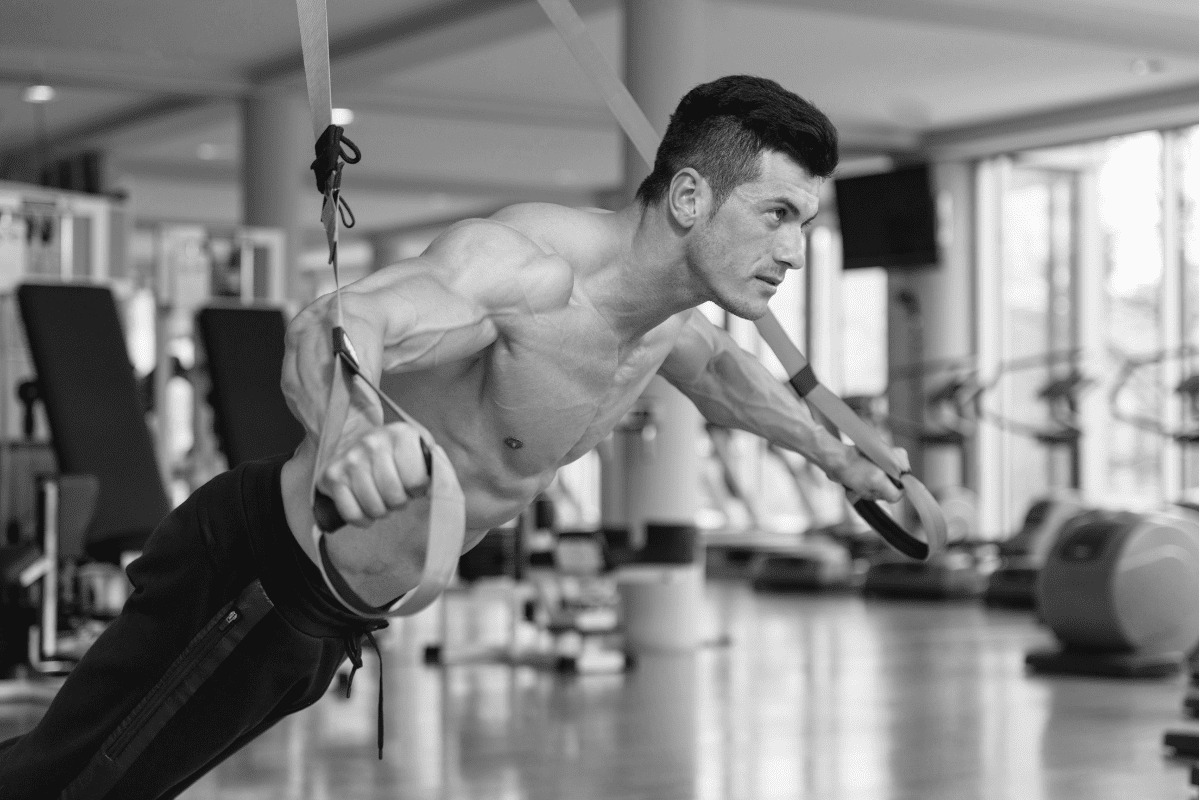TRX Chest Fly (How To, Muscles Worked, Benefits)
The TRX Chest Fly is a bodyweight exercise that targets the muscles of your chest, shoulders, and core. It involves using suspension training equipment, such as the TRX suspension trainer, to perform a fly-like motion.
The TRX chest fly is a challenging exercise that requires control, balance, and strength. It’s a great exercise for anyone looking to improve their upper body strength and can add some variety to most strength training programs.
In this guide, I’ll teach you how to properly perform TRX Chest Flys. I’ll also go over the muscles worked, the exercise’s benefits and provide a few alternatives as well.
This article contains affiliate links. If you buy something using these links I may earn a commission. Thanks.
How To Do TRX Chest Flys
Equipment Needed
- TRX Suspension Trainer
- Anchor (something sturdy to attach the strap to)
Muscles Worked
- Chest
- Shoulders (Anterior Delt)
- Core (as a stabilizer)
Step-by-Step Instructions
- Adjust the TRX suspension trainer to your appropriate height and length
- Stand facing away from the anchor point and hold the TRX handles with your palms facing down
- Step forward to lean your body at a slight angle and extend your arms fully in front of you
- Engage your core and chest muscles
- Move your arms out to the sides with a slight bend in the elbows to lower your body
- Pause for a moment when your hands are level with your chest
- Squeeze your chest muscles to bring your hands back together in front of your chest
- Return slowly to the starting position
- Repeat the exercise for desired reps
- Adjust your body angle or foot position to vary the difficulty
Coaching Points
Keep your body in a straight line. Do not let the hips slouch forward or allow them to hinge back.
To increase the difficulty of a TRX Chest Fly, walk your feet toward the anchor point. This should position your body more parallel to the ground and therefore place more of your bodyweight toward your upper body.
To decrease the difficulty of a TRX Chest Fly, walk your feet away from the anchor point. This should place your body in a more upright position and lessen the amount of your bodyweight that your upper body is supporting.
Benefits of TRX Chest Flys
TRX Chest Fly targets your chest, shoulders, and (to a lesser degree) arms, helping to increase upper body strength.
To perform TRX Chest Flys correctly, you need to engage your core muscles to maintain balance and control, which can help to improve your core stability and overall balance.
You only need a TRX suspension trainer to perform TRX Chest Flys, making it a convenient exercise that you can do anywhere.
TRX Chest Fly Alternatives
Don’t have a TRX Strap? Here are a couple of alternative exercises you may be able to use instead.
Dumbbell Incline Flys

This exercise is very similar to the TRX Chest Fly but performed with dumbbells.
Dumbbell Incline Flys are a great alternative as they allow you to increase resistance more easily than with TRX. Going up five pounds in a dumbbell is much easier to track than remembering the exact angle of your body from a previous workout.
Cable Crossovers

This exercise is performed on a cable machine and targets the chest muscles by simulating a fly motion. Cable Crossovers are a good alternative to TRX Chest Flys as they’re essentially the exact same movement pattern, just with a different form of resistance.
Also, like Dumbbell Flys, Cable Crossovers allow for more specific adjustability of resistance.
More Links and Info
If you’d like to check out more exercises targeting the chest, back and shoulders head over to the Upper Body Lifts section of our Exercise Library. There you’ll find dozens of movements, all with complete detailed instructions.

